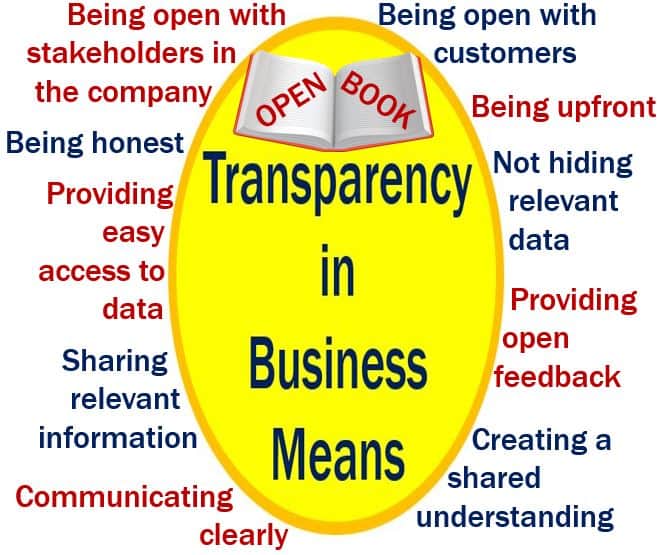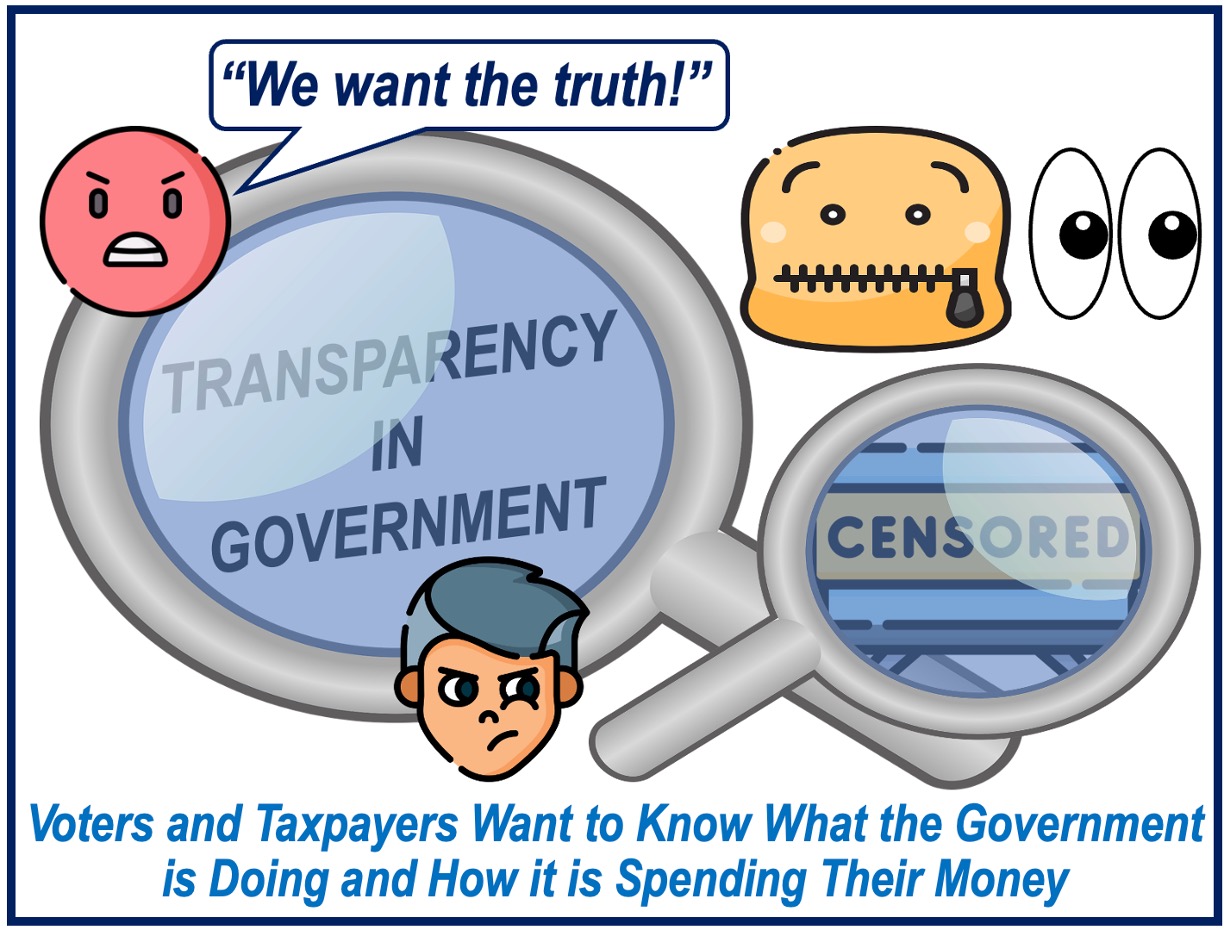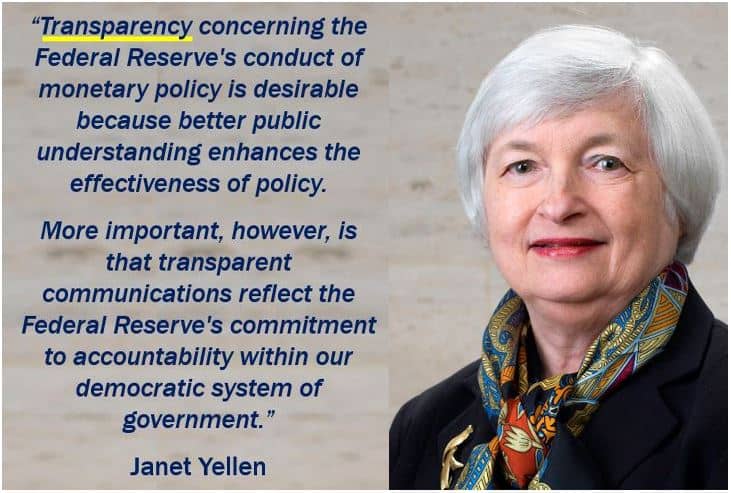Transparency in finance refers to the extent to which shareholders, investors and other stakeholders have ready access to a company’s or market’s data, such as audited financial reports, market depth, price levels, and the planned actions and behaviors of its senior management.
Government transparency refers to how much information a country’s government shares with its citizens.
Government transparency is defined by its honesty, accountability and openness. In a democracy or free society, it is the government’s duty to be transparent – it is at the heart of how the citizens of a nation hold their lawmakers and public officials accountable.
Transparency in business, markets and finance
Business people and investors hate two things more than anything else:
1. Not knowing what is going on.
2. Not being able to forecast, especially over the near (short) term, because of lack of reliable information.
If a business, market, or sector lacks transparency, the business community either revolts or goes elsewhere.
Transparency helps minimize price volatility, because all the players in a market base their decisions, actions and behaviors on the same data – rumors, which can influence markets significantly, are kept to a minimum.
Commercial enterprises also have a strong motivation to be transparent and provide disclosure, because in most cases it is rewarded through the performance of their shares.
When investors or potential investors are deciding which company shares to buy or sell, their decisions are based on the businesses’ financial reports. The more transparent those reports are, the more likely investors are to consider purchasing stocks.

Comparing two companies
Imagine you are considering investing in one of two companies – John Doe Inc. or Mary Smith Corp. John Doe’s financial reports are completely transparent; everything is included, there is virtually no confusing and complicated jargon – the reports are clear, comprehensive, seemingly honest, and easy to understand.
Mary Smith, on the other hand, runs several different businesses with complex and unclear financial reports. They are full of ambiguities, appear to omit some vital data, and include some dubious statements.

Which company are you more likely to invest in? If you are like the vast majority of investors, you will choose John Doe Inc. The reason is simple, it is easier to understand John Doe’s fundamentals and the risks you are likely to face. Investing in Mary Smith Corp. could be a leap in the dark – you really do not know what your risk might be.
Government transparency
Citizens of a country can only really trust their government if they are given all the facts in a clear and honest way.
Governments are meant to serve the people, so it’s important that everyone can easily see and understand how leaders are making decisions and spending public money.
This kind of transparency helps make sure the government stays fair, honest, and accountable to the people it represents.

Government transparency is generally divided into three broad categories:
Proactive Disclosure
This is also known as affirmative disclosure, refers to revealing information that may be damaging to the person or entity that reveals it. An ‘open’ government typically publishes its data immediately and online.
Campaign Finance Disclosure
Political parties, interest groups and election candidates disclose their expenditure. Disclosing where their campaign money came from and how those funds were spent.
In the U.S., both state and federal laws have rules about how election campaigns are funded. These laws limit how much money people can donate, require candidates to report who gave them money, and make them keep detailed records of their campaign finances.
This helps make elections more fair and transparent, so voters can see where the money is coming from.
Requesting of Public Records
In the United States, the Freedom of Information Act (FOIA) was signed into law by President Lyndon Johnson in 1966, and became law in 1967 (amended in 2002). FOIA allows for the partial or full disclosure of previously unreleased documents and data controlled by the US Federal Government.

According to the British Government (which also has a FOIA):
“The Freedom of Information Act gives you the right to access recorded information held by public sector **organisations. Anyone can request information – there are no restrictions on your age, nationality or where you live.”
** Spelling: USA – Organizations. UK – Organisations.
On this FOIA.gov web page, US citizens can find where they can make a FOIA request.
On this web page, UK citizens can find a list of organizations and government departments that they can make a FOIA request to.

Open Data in Canada describes the capacity for the Federal Government of Canada and other levels of government within the country to provide online access to information gathered and created by governments in a standards-compliant Web 2.0 way.
In Australia, citizens have rights under the Freedom of Information Act 1982 to request access to government documents. According to the Australian Government:
“The FOI Act also requires agencies to publish specified categories of information, and allows them to proactively release other information.”
